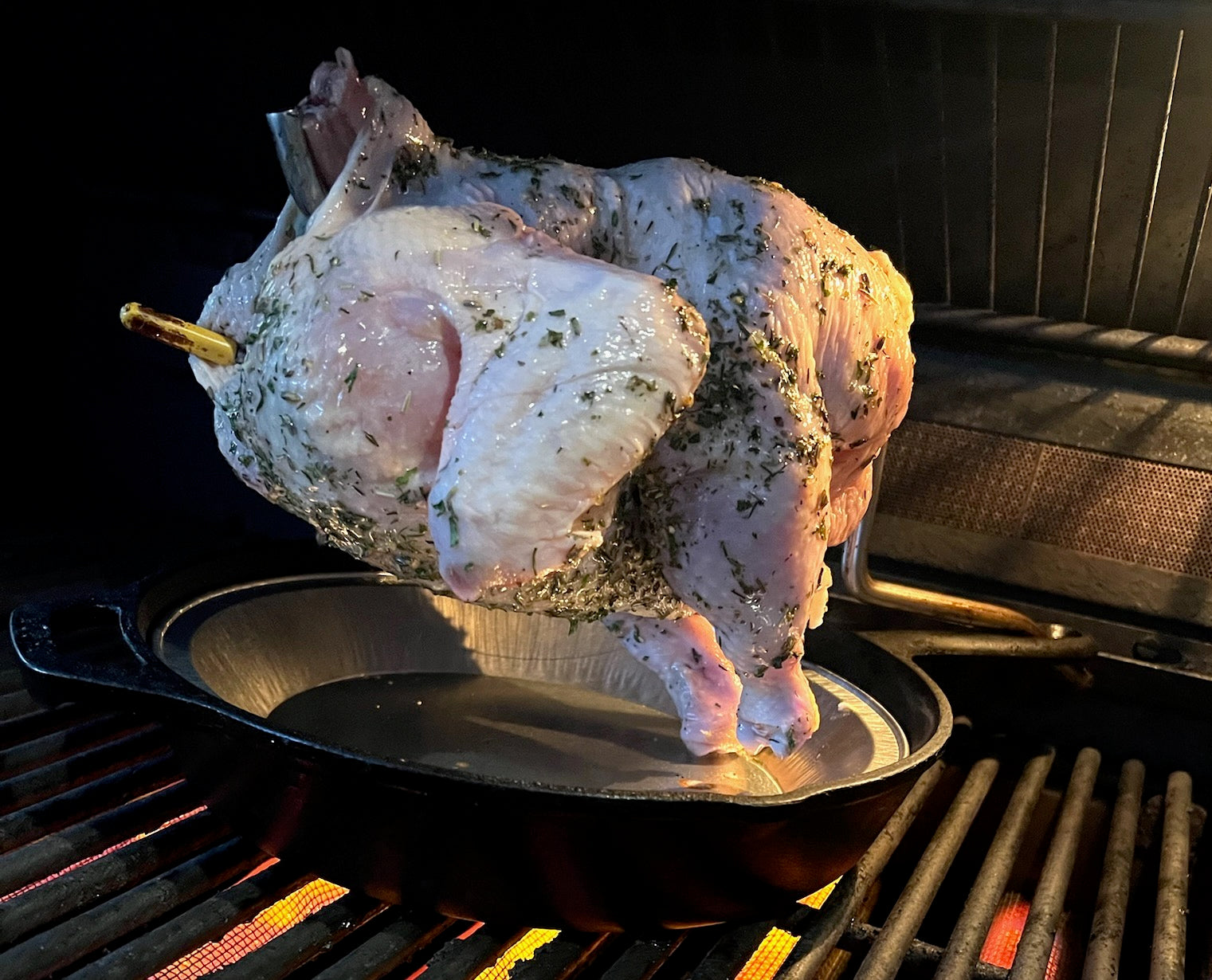
The Whole Chicken Economy: How Roasting an Entire Bird Can Save Your Family Money and Boost Nutrition
The Whole Chicken Economy: How Roasting an Entire Bird Can Save Your Family Money and Boost Nutrition
In today's economy, finding ways to stretch your food budget without sacrificing nutrition is more important than ever. One of the most overlooked strategies for budget-conscious home chefs is purchasing whole chickens instead of individual parts. Let's explore how this simple switch can dramatically reduce your grocery bill while delivering delicious, healthy meals your family will love.
The Price Gap: Whole Chickens vs. Individual Parts
According to data from the Federal Reserve Economic Data (FRED), the price difference between whole chickens and chicken parts is significant. Recent figures show whole chickens cost approximately half as much per pound as boneless, skinless chicken breasts. (See average price for chicken breast here.)
The United States Department of Agriculture (USDA) reports that the average price of a whole chicken is $1.69 per pound, while chicken breasts average $2.56 per pound. That's a 51% markup for the convenience of pre-cut parts!
To put this in perspective, a 5-pound whole chicken at $1.69/lb costs $8.45, while the equivalent amount of chicken breast at $2.56/lb would cost $12.80. That's a savings of $4.35 per chicken – which adds up quickly for families who eat chicken regularly.
The Hidden Value: Getting More Than Just Meat
The savings extend beyond the initial price difference. When you buy a whole chicken, you're getting additional value in the form of bones for homemade broth. Store-bought organic bone broth costs about $5 per quart, but you can make approximately 2 quarts from a single chicken carcass. This effectively reduces your per-pound cost even further.
Using the whole bird also gives you flexibility in meal preparation and encourages culinary creativity. You have the freedom to decide if you want to serve thighs, drumsticks, wings, breast fillets, or even crispy chicken skin. This variety helps prevent meal fatigue and allows you to adapt to your family's preferences.
Nutritional Benefits of Whole Chicken Cooking
The benefits aren't just financial. Cooking a whole chicken offers nutritional advantages too:
-
Better flavor and texture: Whole roast chicken comes out much juicier, with more tender white meat than pre-cut parts. This improved texture means less need for heavy sauces or breading to make the meat palatable.
-
Reduced processing: Whole chickens typically undergo less processing than pre-packaged parts, meaning fewer opportunities for contamination and less handling.
-
Balanced nutrition: Using different parts of the chicken provides a more balanced nutritional profile than relying solely on breast meat. Dark meat contains more iron, zinc, and B vitamins, while white meat is leaner and higher in protein.
-
Bone broth benefits: The bones and connective tissues from your chicken can be transformed into nutrient-rich broth containing collagen, gelatin, and minerals that support gut health, joint function, and immune system strength.
Making the Most of Your Whole Chicken
Here's how to maximize value from each whole chicken purchase:
Step 1: Roast it Whole
A simple roasted chicken with the PoulTree can be the centerpiece of a beautiful Sunday dinner. Season with salt, pepper, and herbs, then roast at 375°F for about 20 minutes per pound until it reaches an internal temperature of 165°F.
Step 2: Enjoy the Prime Cuts
Serve the breast, thighs, and drumsticks as your main dish with vegetables and a starch for a complete meal. A 5-pound chicken easily feeds a family of four with some leftovers.
Step 3: Use the Leftovers Creatively
Leftover chicken meat can transform into endless quick meals:
- Chicken salad sandwiches
- Quick quesadillas or tacos
- Chicken soup or stew
- Pasta dishes or casseroles
- Lunch protein (much cheaper than deli meat, which can cost $9+ per pound)
Step 4: Make Bone Broth
Place the carcass in a slow cooker with vegetable scraps, a tablespoon of apple cider vinegar (to help extract minerals from the bones), and cover with water. Cook on low for 12-24 hours for rich, homemade bone broth.
Overcoming Common Objections
Many home cooks hesitate to buy whole chickens due to perceived inconvenience or unfamiliarity with preparation. However, the time investment pays off in both cost savings and cooking skills development. Now that the PoulTree exists, roasting chicken is not hard and a lot of fun when you know you are saving money.
Don't worry about the butchering process – you can roast the chicken whole and carve it after cooking. If you do want to cut it up first, there are plenty of online tutorials that make the process approachable even for beginners.
The Bottom Line
For budget-conscious families looking to eat healthier without breaking the bank, whole chickens represent one of the best values in the meat department. When you factor in the multiple meals and nutritious broth you can create from a single bird, the effective price drops dramatically – potentially to as low as $1.50 per pound.
This simple switch in shopping habits can save a family hundreds of dollars annually while providing more nutritious, versatile meals. It's time to embrace the whole chicken economy – your wallet and your family's health will thank you.
Ready to get started? Pick up a whole chicken on your next shopping trip and discover the satisfaction of stretching your food budget while creating delicious, nourishing meals from a single ingredient.


0 comments